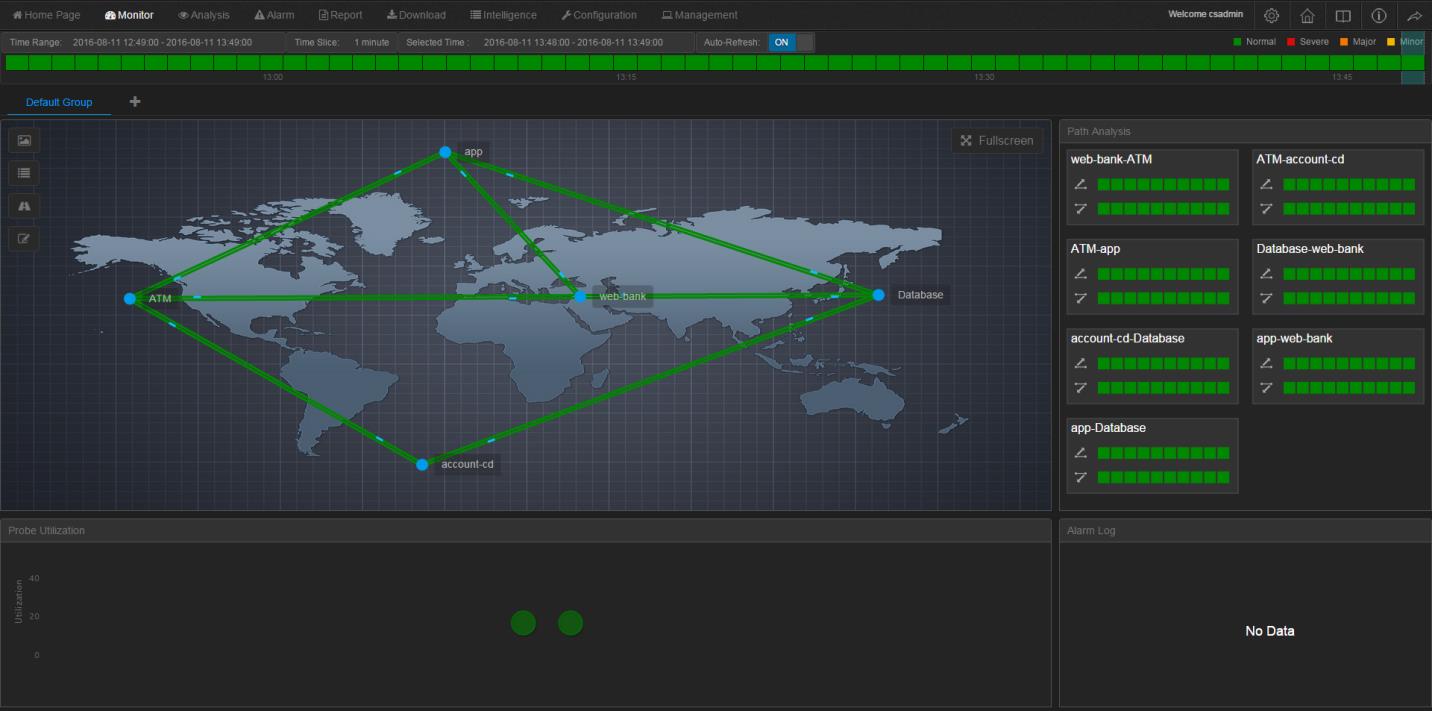
#NETWORK PERFORMANCE MONITOR LINUX INSTALL#
Darkstat – Captures Network Traffic Install Darkstat in Linux # yum install epel-release

You can also use it via the command line to get the same results. It is a network statistics monitoring tool that works by capturing network traffic, computes usage statistics, and serves the reports over HTTP in a graphical format. Bmon – Bandwidth Monitor and Rate Estimator Install Bmon in Linux # yum install epel-release ĭarkstat is a small, simple, cross-platform, real-time, efficient web-based network traffic analyzer. It captures network statistics and visualizes them in a human friendly format so that you can keep an eye on your system. bmon – Bandwidth Monitor and Rate Estimatorīmon is also a straightforward command line tool for monitoring network bandwidth utilization and a rate estimator, in Linux. NetHogs – Monitor Network Usage Per User Install NetHogs in Linux # yum install epel-release ĥ. It simply offers real time statistics of your network bandwidth usage on a per-process basis. NetHogs is a tiny top-like, text-based tool to monitor real time network traffic bandwidth usage by each process or application running on a Linux system. NetHogs – Monitor Network Traffic Bandwidth nload – Monitor Network Usage Install nload in Linux # yum install epel-release Ĥ. In addition, it also displays information such as the total amount of transfered data and min/max network usage. It uses graphs to help you monitor inbound and outbound traffic. Nload is a another simple, easy to use command-line tool for monitoring network traffic and bandwidth usage in real time. Iftop Display Bandwidth Usage Install iftop in Linux # yum install epel-release It displays network usage bandwidth updates every 2, 10 and 40 seconds on average. Iftop is a simple, easy to use, real time top-like command line based network bandwidth monitoring tool, used to get a quick overview of network activities on an interface. Install VnStat in Linux # yum install epel-release You can actually view these logs even after system reboots. One advantage it has over similar tool is that it logs network traffic and bandwidth usage statistics for later analysis – this is its default behavior. VnStat is a fully-featured, command line-based program to monitor Linux network traffic and bandwidth utilization in real-time, on Linux and BSD systems. You can create, schedule, and generate comprehensive bandwidth analysis reports in just a few clicks. With its customizable reports, NetFlow Analyzer also helps you predict and plan your bandwidth requirements.

With its traffic shaping abilities, NetFlow Analyzer helps you identify network anomalies in real-time and troubleshoot them before they affect your end-users.

You can track the traffic patterns in your network over any period of time, and drill down further into the device, interface, application, and user-level details. It monitors your network, analyzes traffic patterns, and detects and diagnoses bandwidth hogs. ManageEngine NetFlow Analyzer is a flow-based bandwidth monitoring solution that offers multi-vendor support.

This article includes a mix of small tools for monitoring bandwidth on a single Linux machine and complete monitoring solutions capable of handling a few number of hosts on a LAN ( Local Area Network) to multiple host even on a WAN ( Wide Area Network). The tools listed below are all open source and can help you to answer questions such as “ why is the network so slow today?”. If you are looking to manage, troubleshoot or debug your Network, then read our article – A Linux Sysadmin’s Guide to Network Management, Troubleshooting and Debugging In this article, we will review 16 useful bandwidth monitoring tools to analyze network usage on a Linux system. Read Also: 20 Commad Line Tools to Monitor Linux Performance Are you having problems monitoring your Linux network bandwidth usage? Do you need help? It’s important that you are able to visualize what is happening in your network in order to understand and resolve whatever is causing network slowness or simply to keep an eye on your network.


 0 kommentar(er)
0 kommentar(er)
